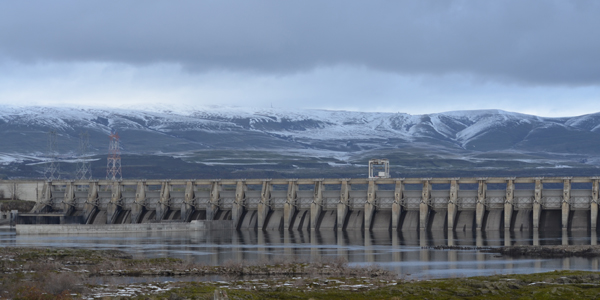By Hudson Sangree
The Bonneville Power Administration on Tuesday continued its series of discussions with stakeholders about joining CAISO’s Western Energy Imbalance Market, with a possible activation date in 2022.
Tuesday’s talks revolved around EIM settlements, with detailed presentations about invoices, charges and metering. The calculations may have appeared daunting but ultimately came down to familiar math, said Steve Kerns, BPA’s director of grid modernization.
“I want to make sure you don’t find this to be too scary,” Kerns told the dozens of stakeholders on the call and in BPA’s Rates Hearing Room in Portland, Ore. “There’s a lot of stuff going on here, but at the end of the day, it’s adding, subtracting [and] multiplying.”
Prior meetings that were part of BPA’s EIM stakeholder initiative have covered subjects such as market power, transmission and governance. Future meetings will deal with resource sufficiency and carbon obligations, with the next session scheduled for Jan. 16 in Portland.
BPA is targeting next September for issuing a final record of decision authorizing it to sign an implementation agreement with the EIM, which would allow the agency to begin spending on implementation projects without obligating it to join the market.
So far there has been little opposition among BPA stakeholders to joining the EIM, though details of the move are still being worked out. Joining would ease short-term trading of Pacific Northwest hydro power for solar energy from the desert Southwest and wind power from Rocky Mountain states.
BPA controls the Pacific Northwest’s largest hydroelectric resources — including the Grand Coulee, The Dalles and Chief Joseph dams on the Columbia River — and operates about 70% of the region’s transmission. Its balancing area covers most of Oregon, Washington, Idaho and western Montana, along with smaller portions of California, Nevada and Wyoming.

The Dalles Dam on the Columbia River is one of the major hydroelectric resources that the Bonneville Power Administration could bring to the Western Energy Imbalance Market. | © RTO Insider
If BPA signs an agreement with the EIM, it would bring a territory the size of France into CAISO’s real-time market. The EIM has been expanding rapidly, with entities joining or seeking to join from Canada to the Mexican border.
Idaho Power and Powerex began transacting in the market in April, bringing the number of members participating to eight. (See Idaho, Powerex Began Trading in Western EIM.) That expansion equipped the EIM to serve imbalances for about 55% of load in the Western Interconnection, according to the ISO.
NV Energy, Arizona Public Service, PacifiCorp, Puget Sound Energy and Portland General Electric are already participants.

The Energy Imbalance Market currently has seven participants in addition to CAISO. | CAISO
The Sacramento Municipal Utility District plans to begin participating in the EIM in April 2019. The Los Angeles Department of Water and Power, Arizona’s Salt River Project and Seattle City Light are scheduled to go live in April 2020. Public Service Company of New Mexico recently received state regulators’ permission to join the EIM by 2021. (See PNM Seeks to Join Energy Imbalance Market.)
In debates about establishing a Western RTO led by CAISO, the EIM often has been held up as a better alternative because, unlike an RTO, the market’s transmission-owning entities retain operational control over their assets, while member generators participate in the real-time market on a voluntary basis.
The EIM has conferred a half-billion dollars of benefits on participants since its founding five years ago, with $100 million realized in the third quarter of 2018 alone, CAISO officials said in October. (See Western EIM Reports Record Benefits.)
Moreover, the EIM’s board consists of members from multiple states, while CAISO’s board is appointed by California’s governor and confirmed by the State Senate. Industry leaders and officials from other Western states don’t want to cede control to California, and California politicians don’t want to give up authority over CAISO.
A series of CAISO regionalization measures that would have broadened its governance to include out-of-state representatives have failed in the State Legislature in recent years, largely because of this impasse. Proponents of a single RTO for the West say they will likely introduce another bill in January when California lawmakers reconvene for the start of another two-year session. (See Western RTO Proponents Vow to Keep Trying.)
In the meantime, CAISO officials and EIM participants have been pushing ahead to add day-ahead trading to the EIM’s current real-time-only market, bringing it closer to conferring many of the benefits of a regional RTO without the perceived drawbacks.



